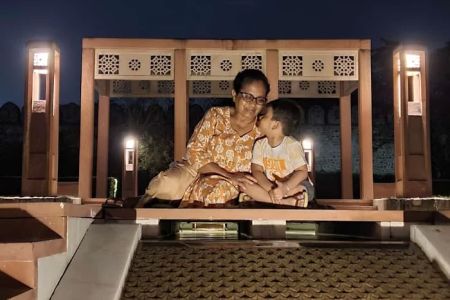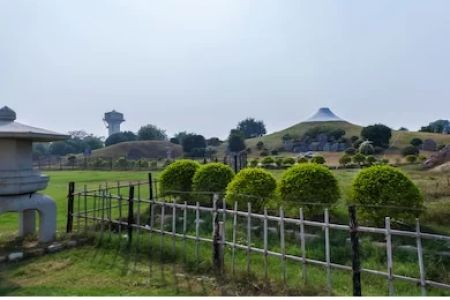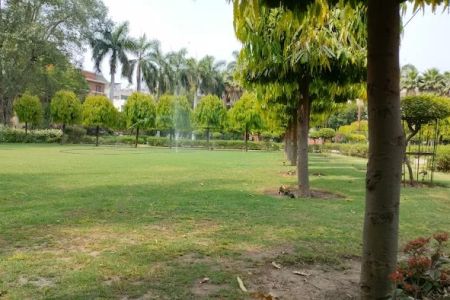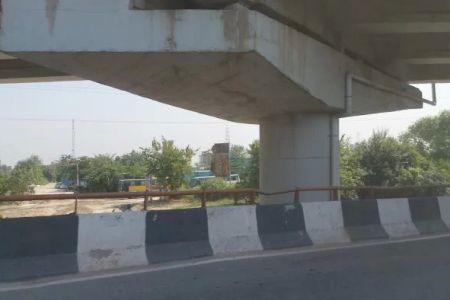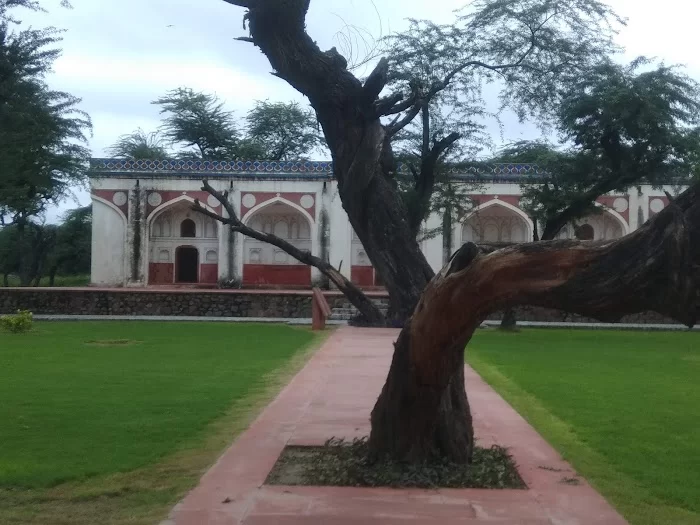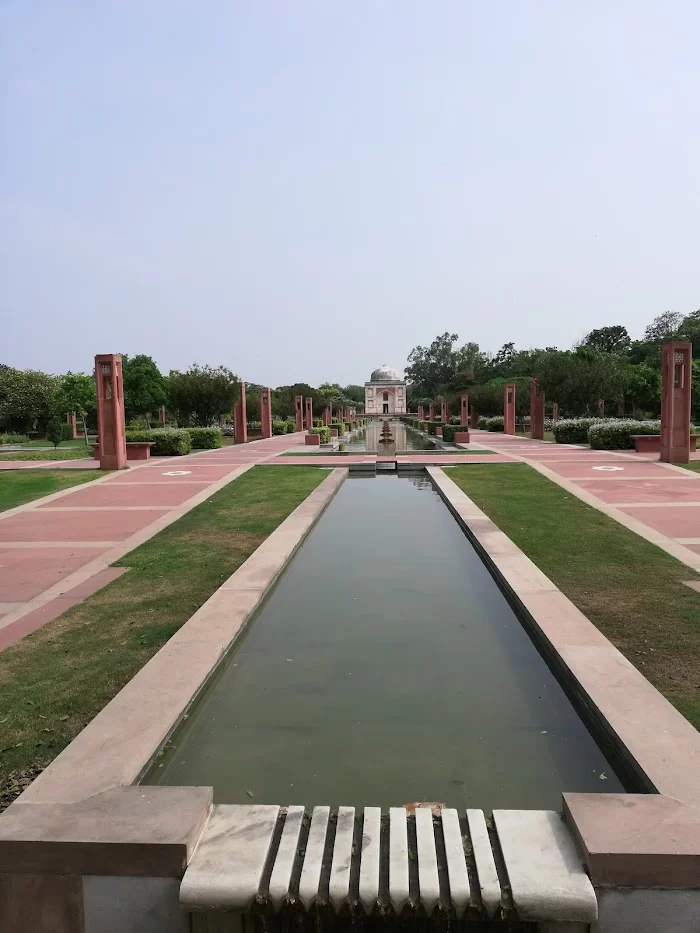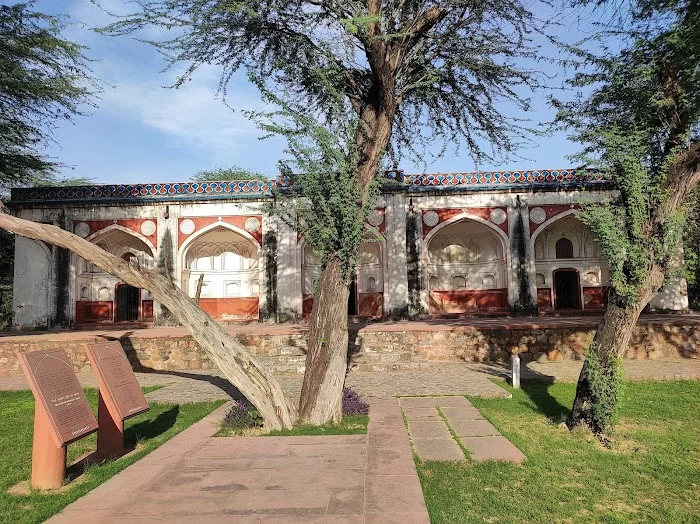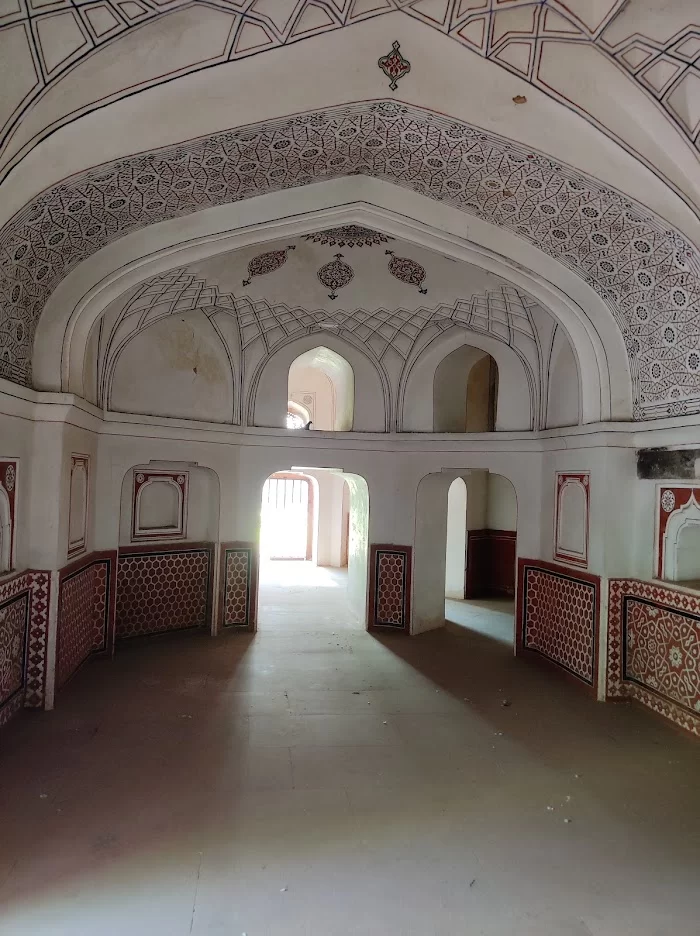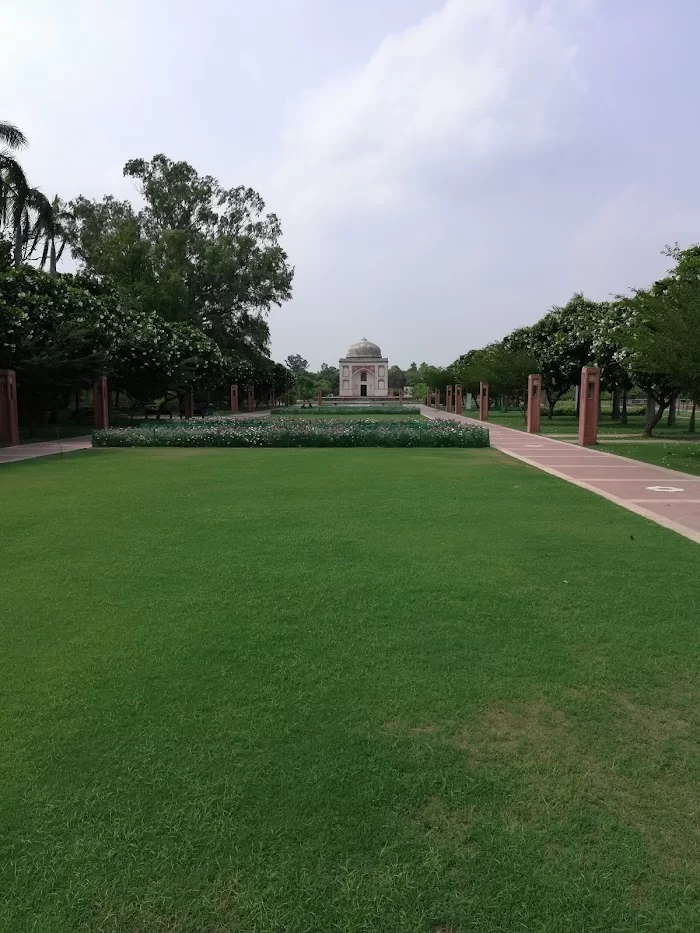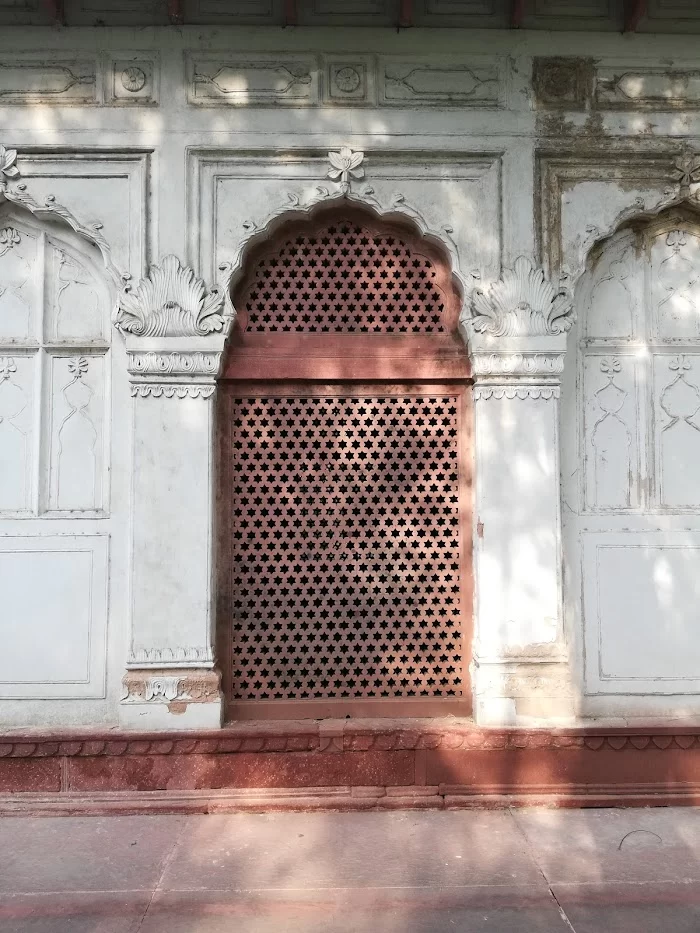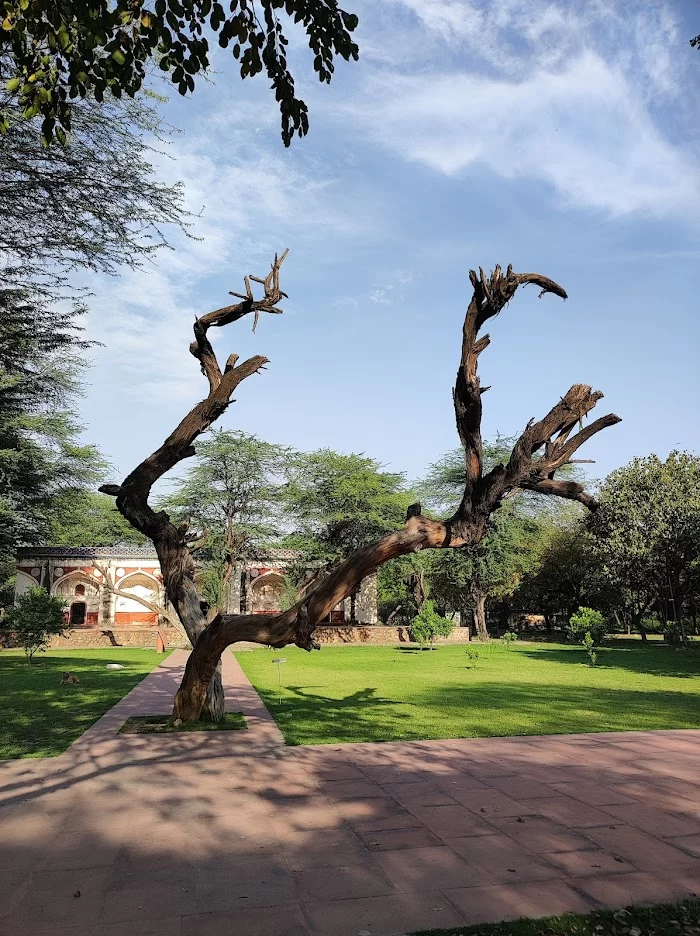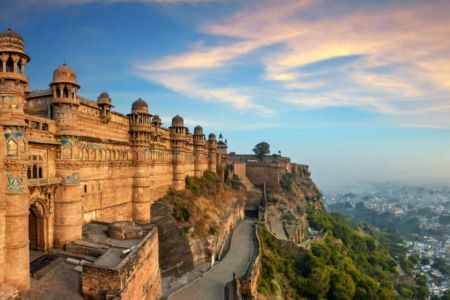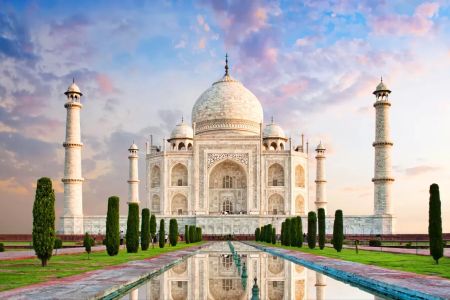Delhi, a city steeped in centuries of history, is an open-air museum where every corner narrates tales of empires, saints, and architectural marvels. For locals, exploring these historical layers is not just about visiting ancient monuments; it's about connecting with their heritage, finding serene spaces, and understanding the rich tapestry that forms the capital's identity. Among the myriad of historical sites, the "Mirza Muzaffar Hussain’s Tomb" stands as a captivating example of Mughal artistry and historical significance, nestled within the broader embrace of the celebrated Sunder Nursery complex. While not a "park" in the modern recreational sense, it is part of a grand garden-tomb enclosure, offering a unique blend of historical exploration and peaceful contemplation.
Dating back to "1603 CE," this garden tomb is more than just a structure; it's a piece of living history. It is described as a "rare plan comprising eight chambers surrounding the central crypt thus resembling Hasht Bihist or the eight spaces of Quranic paradise," showcasing exceptional architectural vision. Its "symmetrical" design and "profusely ornamental interiors with painted incised plaster patterns," alongside "ornamental muqarnas and tile work," speak volumes about the artistic prowess of its era. Crucially, this tomb is a significant part of the "11 acre 'Batashewala Complex'," which itself is located "to the north of the Humayun’s Tomb World Heritage Site." This proximity to a UNESCO World Heritage site immediately elevates its importance, positioning it within a larger 16th-century Mughal necropolis. For Delhiites, this means an opportunity to immerse themselves in a rich historical narrative, right in their backyard, discovering a less-explored but equally fascinating facet of their city's past. This article aims to guide local users through the historical significance, architectural marvels, and overall experience of visiting Mirza Muzaffar Hussain’s Tomb, revealing why it’s a must-visit for history enthusiasts and those seeking a unique heritage experience.
Location and Accessibility
Mirza Muzaffar Hussain’s Tomb is situated within a historically rich and well-connected precinct of New Delhi, making it highly accessible for residents across the capital. Its address is: H6WX+8H9 Sunder Nursery, Nizamuddin, National Zoological Park, Sundar Nagar, New Delhi, Delhi 110003, India. This location places it strategically within the larger Sunder Nursery complex, which itself has become a popular heritage and ecological park.
The accessibility of this historical site is a significant advantage for those wishing to explore Delhi’s heritage. The Nizamuddin area is a major hub, well-served by various modes of public transportation. The Hazrat Nizamuddin Railway Station, one of Delhi’s busiest, is in close proximity, making it convenient for visitors arriving from other parts of the city or even the NCR. The Delhi Metro offers excellent connectivity, with the Sarai Kale Khan - Nizamuddin Metro Station (Pink Line) being the nearest metro stop. From there, the tomb, located within Sunder Nursery, is just a short auto-rickshaw ride or a pleasant walk away. Numerous DTC bus routes also ply through the Nizamuddin area, further enhancing public transport options. For those driving, Sunder Nursery, where the tomb is located, typically provides parking facilities, though it's advisable to check for specific arrangements and availability, especially during peak visitor times. The tomb's integration within the well-known Sunder Nursery complex ensures easy navigation for locals, as Sunder Nursery itself is a recognizable and popular landmark for heritage and nature walks.
Services Offered
Mirza Muzaffar Hussain’s Tomb, as a protected historical monument within the Sunder Nursery complex, offers "services" primarily related to heritage preservation, education, and visitor experience, rather than commercial services in the typical sense of a park.
- Access to a Historical Monument: The primary service is providing public access to a significant 16th-century Mughal tomb, allowing visitors to explore its architecture and historical context.
- Architectural and Historical Interpretation: The structure itself serves as an educational tool, showcasing "rare plan" architecture (Hasht Bihist), "profusely ornamental interiors," "painted incised plaster patterns," and "ornamental muqarnas and tile work." Information plaques (though not explicitly mentioned, are standard for ASI-protected sites) help interpret these features.
- Part of a Larger Heritage Complex: Being part of the "Batashewala Complex" and adjacent to the "Humayun’s Tomb World Heritage Site" and the Dargah of Hazrat Nizamuddin Auliya, the tomb offers a holistic heritage experience. Visitors gain access to a broader historical narrative.
- Serene Environment for Reflection: As a "garden tomb," it provides a tranquil and aesthetically pleasing environment for visitors to relax, reflect, and appreciate historical artistry amidst greenery.
- Cultural Significance: It allows visitors to connect with the "16th century Mughal necropolis" and the legacy of the "14th century Sufi saint who has been revered for seven centuries," offering a profound cultural experience.
- Photography Opportunities: Its unique architecture and ornamental details provide excellent opportunities for photography enthusiasts interested in heritage and art.
- Security and Preservation: As a monument "protected by the Archaeological Survey of India (ASI)," it implicitly offers the service of continuous preservation and security, ensuring the monument's longevity for future generations.
Features / Highlights
Mirza Muzaffar Hussain’s Tomb is rich in historical, architectural, and cultural features that make it a compelling highlight within Delhi's heritage landscape.
- Rare Hasht Bihist Plan: A significant highlight is its "rare plan comprising eight chambers surrounding the central crypt thus resembling Hasht Bihist or the eight spaces of Quranic paradise." This architectural design is highly significant and visually striking.
- Profusely Ornamental Interiors: The tomb boasts "profusely ornamental interiors with painted incised plaster patterns." This intricate detailing showcases the exquisite craftsmanship of the Mughal era and provides a visually rich experience for visitors.
- Ornate Muqarnas and Tile Work: The presence of "ornamental muqarnas and tile work on the façade" adds another layer of architectural beauty and complexity, reflecting the sophisticated decorative techniques employed during its construction.
- Historical Significance (1603 CE): Dating back to the early 17th century, the tomb offers a direct link to the Mughal period, specifically being the resting place of "Akbar’s son in law," Mirza Muzaffar Hussain, grand-nephew of Emperor Humayun.
- Part of the Batashewala Complex: It is the "principal tomb" within the 11-acre Batashewala Complex, which includes other contemporary Mughal tombs, providing a concentrated area for heritage exploration.
- Proximity to Humayun’s Tomb World Heritage Site: Its location "to the north of the Humayun’s Tomb World Heritage Site" significantly elevates its prominence, as visitors can easily combine a visit to both historically important sites, offering a comprehensive Mughal heritage experience.
- Adjacent to Hazrat Nizamuddin Auliya Dargah: Its close association with the "Dargah of Hazrat Nizamuddin Auliya," a revered Sufi saint, adds a spiritual and cultural dimension to the visit, connecting it to centuries of veneration.
- Protected by ASI: Being "protected by the Archaeological Survey of India (ASI)" ensures its preservation and highlights its national importance, guaranteeing its maintenance for future generations.
Promotions or Special Offers
As a historical monument protected by the Archaeological Survey of India (ASI) and located within the managed Sunder Nursery complex, Mirza Muzaffar Hussain’s Tomb primarily offers public access for a fee, but does not typically engage in commercial promotions or special offers in the same way a business might. The "promotion" is the inherent historical and architectural value it presents.
Access to Mirza Muzaffar Hussain’s Tomb is generally part of the entry ticket to Sunder Nursery. While the prompt does not specify a separate fee for the tomb itself, Sunder Nursery typically has a nominal entry fee. This fee contributes to the maintenance and preservation of the entire complex, including the various monuments within it.
Potential "offers" or scenarios relevant to visitors might include:
- Combined Entry Tickets: The entry ticket to Sunder Nursery covers access to all monuments within its premises, offering a comprehensive heritage experience for a single fee. This is a common practice for heritage complexes.
- Educational Discounts: Discounts for students or large educational groups, often arranged through Sunder Nursery's management or ASI.
- Senior Citizen Discounts: Some ASI sites offer reduced entry fees for senior citizens.
- Free Entry Days: Occasionally, ASI-protected monuments might have specific days (e.g., World Heritage Day) where entry is free, though this is not a regular promotion.
- Guided Tours: While not a discount, guided tours of Sunder Nursery (which would include the tomb) might be offered, enhancing the visitor's understanding and experience for a separate fee.
Visitors interested in current entry fees or any special arrangements should check the official website of Sunder Nursery or the Archaeological Survey of India (ASI) for the most accurate and up-to-date information, or inquire at the Sunder Nursery ticket counter.
Contact Information
For detailed inquiries regarding Mirza Muzaffar Hussain’s Tomb, its specific historical context, visiting hours, or information about guided tours, it is best to refer to the broader management of Sunder Nursery or the Archaeological Survey of India (ASI), which protects the monument.
Address: H6WX+8H9 Sunder Nursery, Nizamuddin, National Zoological Park, Sundar Nagar, New Delhi, Delhi 110003, India
Phone: While a direct phone number specifically for Mirza Muzaffar Hussain’s Tomb is not typically available, general inquiries about the monument and its access can be directed to the Sunder Nursery management or the Archaeological Survey of India (ASI) Delhi Circle office. Their contact details would usually be available on their respective official websites or through general online searches for "Sunder Nursery contact number" or "ASI Delhi Circle contact." These are the most relevant authorities for historical sites within their purview.
Conclusion: Why this place is suitable for locals
Mirza Muzaffar Hussain’s Tomb, nestled within the picturesque Sunder Nursery, is an exceptionally suitable and enriching destination for locals in Delhi, offering a unique blend of historical immersion, architectural appreciation, and serene outdoor experience. Its suitability for Delhiites stems from several profound aspects that resonate deeply with the city's identity and the preferences of its residents.
Firstly, for history enthusiasts, the tomb is a direct gateway to Delhi's rich Mughal past. Its construction in "1603 CE" and its connection to Emperor Akbar's son-in-law provide a tangible link to a pivotal era. The unique "Hasht Bihist" architectural plan, with its "profusely ornamental interiors" and intricate "muqarnas and tile work," offers a fascinating glimpse into the advanced artistic and engineering capabilities of the period. For locals, this is not just a monument but a piece of their inherited legacy, inviting them to delve deeper into the stories that shaped their city.
Secondly, its inclusion within the "Batashewala Complex" and its adjacency to the UNESCO World Heritage Site of Humayun's Tomb and the Dargah of Hazrat Nizamuddin Auliya make it part of a larger, incredibly significant historical precinct. This allows locals to experience a layered historical narrative, exploring multiple monuments and cultural sites within a single visit. It transforms a simple outing into a comprehensive heritage walk, offering a profound sense of connection to centuries of Delhi's spiritual and imperial history.
Moreover, while being a historical site, its setting within Sunder Nursery provides a beautiful and tranquil environment. The concept of "garden tomb" ensures that visitors can appreciate the architecture amidst well-maintained greenery, offering a peaceful respite from the urban clamour. For locals seeking a calm space for reflection or a leisurely stroll after soaking in history, this combination is ideal.
Finally, its accessible location in Nizamuddin, a major transport hub, ensures that residents from all corners of Delhi can easily reach this historical gem. The convenience of metro, bus, and railway connectivity removes logistical barriers, making it a viable option for a regular heritage exploration or a thoughtful weekend outing.
In conclusion, Mirza Muzaffar Hussain’s Tomb is more than just a historical monument; it is a captivating piece of Delhi's soul. It offers locals an invaluable opportunity to connect with their past, marvel at exquisite architecture, and find peace within a significant heritage complex. For any Delhiite eager to explore the depths of their city's history and beauty, this tomb is an essential and highly rewarding destination.


